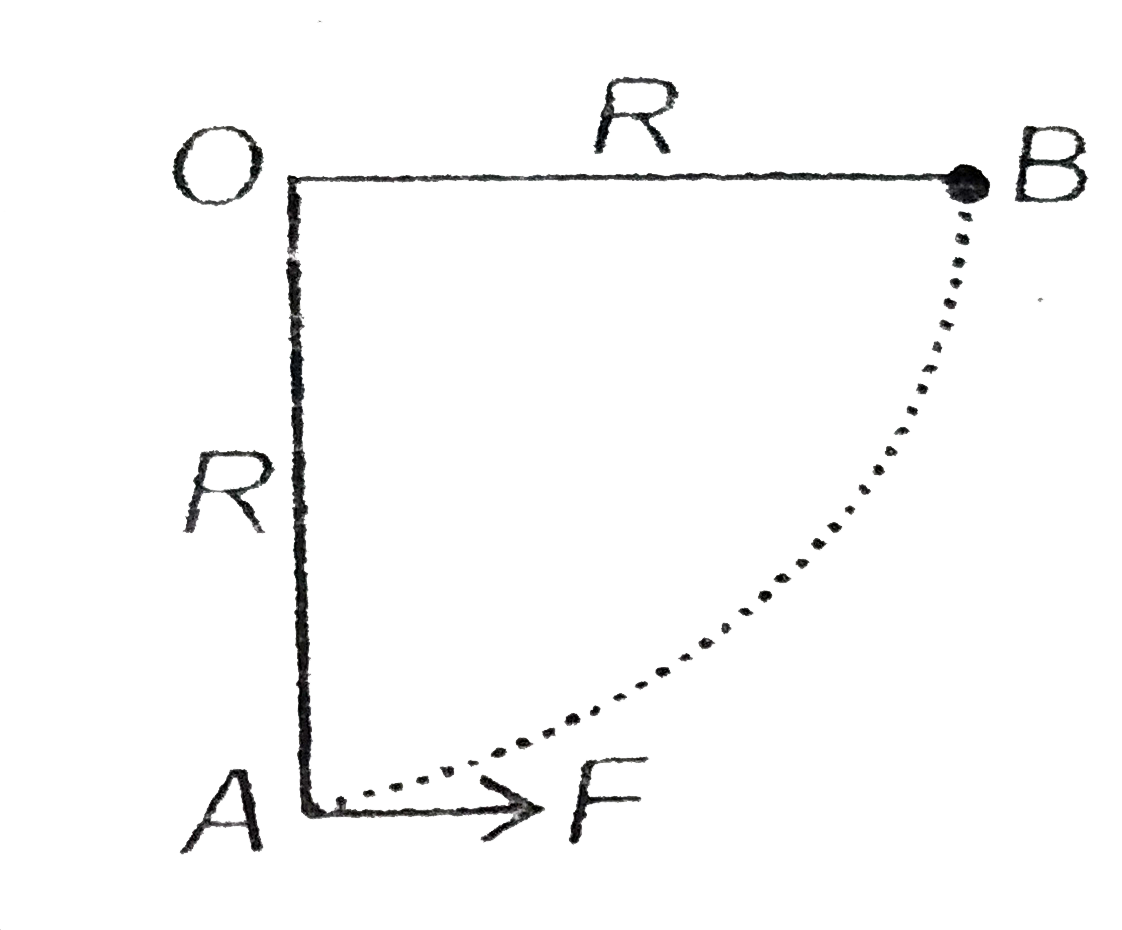A force of magnitude F1 , accelerates a body of mass m from rest to a speed v. Another force F2 accelerates a body of mass 2m from rest to a speed 2v. The ratio of work done by force F2 to that by force F1 is
1:16
16:1
1:8
8:1
The correct Answer is:D
To solve the problem, we need to find the ratio of work done by force F2 to that done by force F1. Let's break this down step by step.
Step 1: Calculate Work Done by Force F1
1. Identify the parameters:
- Mass of the first body, m.
- Final speed, v.
- Initial speed, u=0 (starts from rest).
2. Calculate acceleration A1:
A1=F1m
3. Use the third equation of motion:
v2=u2+2A1S1
Substituting u=0:
v2=2A1S1⟹S1=v22A1
4. Calculate work done W1:
W1=F1⋅S1=F1⋅v22A1
Substitute A1=F1m:
W1=F1⋅v22⋅F1m=mv22
Step 2: Calculate Work Done by Force F2
1. Identify the parameters:
- Mass of the second body, 2m.
- Final speed, 2v.
- Initial speed, u=0 (starts from rest).
2. Calculate acceleration A2:
A2=F22m
3. Use the third equation of motion:
(2v)2=0+2A2S2⟹4v2=2A2S2⟹S2=4v22A2=2v2A2
4. Calculate work done W2:
W2=F2⋅S2=F2⋅2v2A2
Substitute A2=F22m:
W2=F2⋅2v2F22m=F2⋅4mv2F2=4mv2
Step 3: Find the Ratio of Work Done
Now, we can find the ratio of work done by F2 to that done by F1:
W2W1=4mv2mv22=4mv2⋅2mv2=8
Final Answer
The ratio of work done by force F2 to that by force F1 is:
W2W1=8:1
- Mass of the first body, m.
- Final speed, v.
- Initial speed, u=0 (starts from rest).
A1=F1m
v2=u2+2A1S1
Substituting u=0:
v2=2A1S1⟹S1=v22A1
W1=F1⋅S1=F1⋅v22A1
Substitute A1=F1m:
W1=F1⋅v22⋅F1m=mv22
- Mass of the second body, 2m.
- Final speed, 2v.
- Initial speed, u=0 (starts from rest).
A2=F22m
(2v)2=0+2A2S2⟹4v2=2A2S2⟹S2=4v22A2=2v2A2
W2=F2⋅S2=F2⋅2v2A2
Substitute A2=F22m:
W2=F2⋅2v2F22m=F2⋅4mv2F2=4mv2
W2W1=4mv2mv22=4mv2⋅2mv2=8
The ratio of work done by force F2 to that by force F1 is:
W2W1=8:1
Topper's Solved these Questions
- NSO QUESTION PAPER 2016 SET B BOOK - SCIENCE OLYMPIAD FOUNDATION CHAPTER - NSO QUESTION PAPER 2016 SET B EXERCISE - Achievers Section
1 Videos
- NSO QUESTION PAPER 2016 SET ABOOK - SCIENCE OLYMPIAD FOUNDATION CHAPTER - NSO QUESTION PAPER 2016 SET AEXERCISE - SCIENCE
12 Videos
- NSO QUESTION PAPER 2017 SET ABOOK - SCIENCE OLYMPIAD FOUNDATION CHAPTER - NSO QUESTION PAPER 2017 SET AEXERCISE - Achievers Section
1 Videos
Similar Questions
Knowledge Check
If a force of 10 N can accelerate a body of mass 'm' by 1ms−2 , then a force of 100 N can accelerate the same body by_______.
A10ms−2B1ms−2C100ms−2D0.1ms−2If a force of 10 N can accelerate a body of mass 'm' by 1ms−2 , then a force of 100 N can accelerate the same body by_______.
A10 ms−2B1 ms−2C100 ms−2D0.1 ms−2A force F1 acts on a particle so as to accelerate it from rest to a velocity v. The force F1 is then replaced by F2 which decelerates it to rest
AF1 must be equal to F2BF1 may be equal to F2CF1 must be unequal to F2Dnone of these
The work done in time t on a body of mass m which is accelerated from rest to a speed v in time t1 as a function of time t is given by
View SolutionA body of mass M was slowly hauled up a rough hill by a force F which at each point was directed along a tangent to the hill. Work done by the force

View SolutionA body of mass m is moving in a circle of radius r with a constant speed v, The force on the body is mv2r and is directed towards the centre. What is the work done by the force in moving the body over half the circumference of the circle?
View SolutionA force given by the relation F=8t, acts on a body of mass 2kg, initialiy at rest. Find the work done by this force on the body during first 2 seconds of its motion.
View SolutionA force given by the relation F = 8t, acts on a body of mass 2 kg, initially at rest. Find the work done by this force on the body during first 2 seconds of its motion
View Solution

